Growing seedlings and vegetables in greenhouses is much faster due to optimal temperature, lighting and proper irrigation. To save time, resources and effort, many gardeners are building drip irrigation. With its help, it is possible to obtain complete hydration of plants and to avoid intensive evaporation of water, characteristic of the greenhouse. You can build drip irrigation yourself by building a system of improvised materials.
Content
Operating principle
Drip systems were developed in Israel and were first used in 1950. The reason for the use of this system was the lack of water, which is characteristic of this region. Therefore, scientists were tasked with finding a method of irrigation that would reduce the consumption of water resources. According to the results of the research, it was found out that drip irrigation is so effective that it saves time expenses for plant maintenance together with water. Yield with drip wetting is increased by 30%.
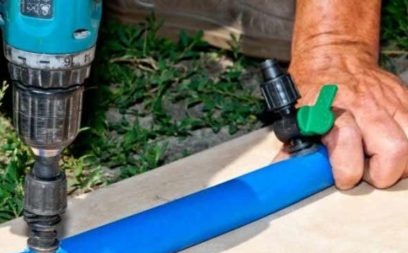
In greenhouses, a barrel is used as a source of water for such irrigation. It is combined with dispensers and outlet pipes with a trunk pipeline. The connection of all elements of the system is performed by fittings.
The line is connected to the barrel under water through a filter. A pipeline with small holes for dispensers departs from it along the entire length of the ridge. Through them, moisture slowly seeps, nourishing the root system of plants. To have a good pressure, the barrel is stirred at an elevation of 50 cm to 3 m. This provides gravity watering. With insufficient pressure, an additional submersible pump is used.
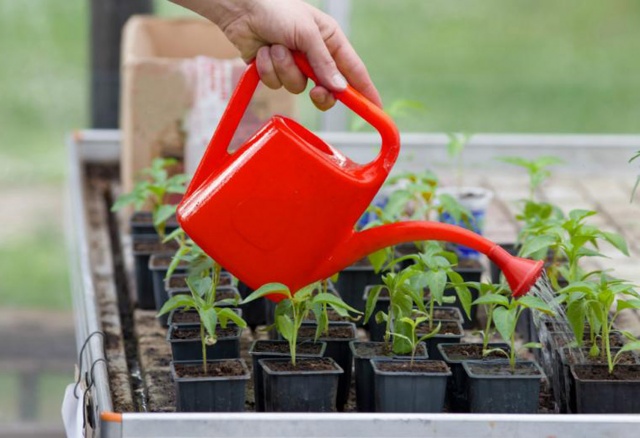 You may be interested in:
You may be interested in:For automation of irrigation, a controller is installed. It regulates the intensity of irrigation and its frequency. You can set several timers on different parts of the network to individually set the mode for different groups of plants.
Advantages and disadvantages
In normal irrigation, the soil is soaked with water only 10 cm. If moisture comes in slowly, it penetrates much deeper. The root system grows faster and stronger and allows the plant to get more nutrients. The possibility of waterlogging of the soil is much reduced, since the rest of the soil is not saturated with moisture. This reduces the risk of dangerous plant diseases - powdery mildew, blackleg, gray rot or bacterial spotting.
Water does not get on the leaves of plants, so there is no risk of sunburn. For weeds, there is no way to spread quickly, since water is supplied only to the root of the cultivated plant. Moreover, with such an irrigation system, the soil is not eroded. Drip irrigation is not difficult to implement, but makes it possible to significantly increase the yield.
The main disadvantage of such an irrigation system is the need to constantly monitor its performance. If water comes in excess of the norm, the plant may die. Therefore, you have to regularly check the condition of the tank and fill it.
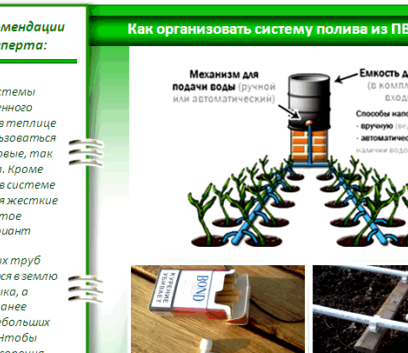
Another disadvantage is the clogging of the dropper holes. Due to their small size, they are constantly clogged with dirt. Therefore, to clean them periodically purge. Also, to prevent the appearance of debris in the tank with water, it is covered with a lid.
Varieties of droppers and intervals between them
A dropper is a small-sized device with a tube on top that fits into the hole in the distribution hose. It controls the flow of moisture to plants. The drip system is selected taking into account the variety of plants, and the size of the greenhouse.
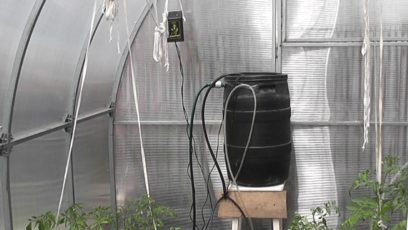
The following varieties are found:
- uncompensated provide moisture more at the beginning of the bed than at its end;
- the compensated ones are equipped with a valve and a membrane, therefore, they give out the optimum moisture volume even in areas with uneven terrain;
- supplying a certain volume of liquid, which is indicated on the package and is from 1 l;
- with manual mode for adjusting the amount of dispensed fluid;
- with the anti-drainage system, the liquid is completely removed from the hose with the water supply turned off, there is no need to blow such droppers, since the pressure in them does not decrease to a minimum;
- with spider dispensers supply moisture simultaneously to different plants.
Choosing a dropper, pay attention to the fact that she understood. This is necessary for high-quality cleaning from dirt.
When making a drip system by yourself, special attention is paid to adjusting the water supply. If the pressure is insufficient, plantings at the end of the garden suffer from a lack of moisture. Intensive fluid intake is also undesirable because the soil is waterlogged.
The distance between droppers and dispensers is selected by type of culture:
- Droppers "spiders" set with a significant interval. They irrigate perennial greenhouse specimens. For open ground and seedlings they are not used, water conduits are built for them suspended.
- For other cultures, the interval between droppers is 30 cm.
- Root crops are irrigated with droppers installed in increments of 20 cm.
- For watering gourds, the gap between the dispensers is increased to 1 m.
How to calculate water volume and duration of irrigation
Before making a homemade drip irrigation, make up a plan for the location of the beds with an indication of their size and note where the plants are located. Then draw an irrigation scheme indicating the location of the tank and all pipelines. Such a detailed plan is necessary to calculate the required amount of materials.
Then calculate the consumed volume of liquid, which determines the size of the barrel. To lay a ten-meter pipeline and install droppers with an interval of 30 cm, they need to purchase 34 pieces. With water passing through every 5 l per hour, the total volume of water will be 170 l.
The volume of water for high-quality irrigation with drip irrigation significantly reduced. For watering cucumbers, 2 liters per day is enough. Tomatoes can be watered 1.5 times once every 4 days. Potatoes and cabbage are irrigated with 2.5 liters of liquid per day.
The duration of irrigation depends on the capacity of the droppers. At a speed of 3 l / h, potatoes and cabbage are watered a little less than an hour. 40 minutes are enough for cucumbers, and half an hour for tomato irrigation.
Autocontroller Benefits
If you install a timer on the drip irrigation system, it will work fully automatically. In this case, a person does not need to open slewing cranes. Special equipment will supply and shut off water at the programmed time. Devices with full automation work without human intervention.They independently control the temperature and humidity indicators in the greenhouse, as well as the degree of soil irrigation.
To automate drip irrigation for a home greenhouse, it is enough to install the simplest device on it, which sets up irrigation at the right time interval. Such a device opens the tap at a given time and after a few minutes closes the water supply. You can set such a timer anywhere in the pipeline. Sometimes it is attached to a pump to control water intake.
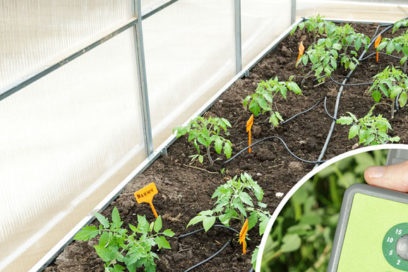
Self assembly drip system
For a homemade drip irrigation system you will need a barrel of 100-200 liters, PVC pipes and conventional medical droppers. The barrel is placed at an elevation of 1-2 m above the ground. Moreover, the higher it is, the stronger the pressure in the pipes will be. At the bottom of the barrel, a crane with a filter is mounted. After that, pipes are placed in the greenhouse for supplying water.
Pipes for supplying liquid are mounted by the number of beds. To perform the wiring, use a tee or corner. The ends of the pipes are closed with plugs. To adjust the flow, taps are installed on the pipes. Droppers are placed in accordance with the number of plants on each bed. To do this, make the initial marking with a marker, and then drill small holes in the pipes with a drill. One edge of the medical dropper is inserted into the hole made. The other end of the tube is lowered to the plant.
The best irrigation systems
Now on sale there are different systems for drip irrigation of industrial production. Usually, domestic gardeners and summer residents use the products of Russian or Belarusian plants.
The drip system "AquaDusya" is produced in Belarus in an automatic and semi-automatic version. In the first case, the entire process of soil moisture is automated. In the daytime, water is collected in the barrel, and at night the plants are irrigated. In the semi-automatic version, you need to manually fill the tank.
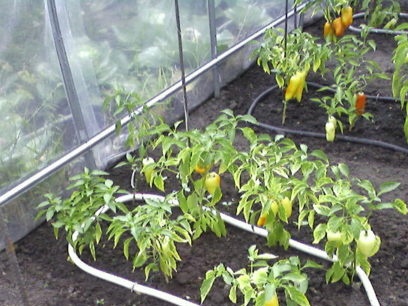
The Zhuk irrigation system is produced by a Russian manufacturer. It is suitable for an 18 m2 greenhouse and is not automated. You can connect it to a barrel or to a constant source of water.
 You may be interested in:
You may be interested in:Using drip irrigation “Clip-36” the beds can be irrigated around the clock. Water is supplied in thin streams every 1.5-2 minutes. This system can irrigate plantings on an area of 36 m2. It is connected to the barrel or to the water supply.
Reviews
Nikita, 45 years old:
Built DIY drip irrigation from medical droppers in a small greenhouse. Of course, this is not a full-fledged factory production system, but it greatly simplifies planting care.
Alena, 36 years old:
In my country house in a greenhouse, I bought and installed AquaDusya. An excellent fully automated system, now instead of tiringly dragging buckets of water, I can do other work.
Conclusion
Drip irrigation systems simplify planting care if properly installed and configured. They reduce water consumption and increase productivity. If it is not possible to buy an expensive factory system, you can make it yourself from improvised materials.

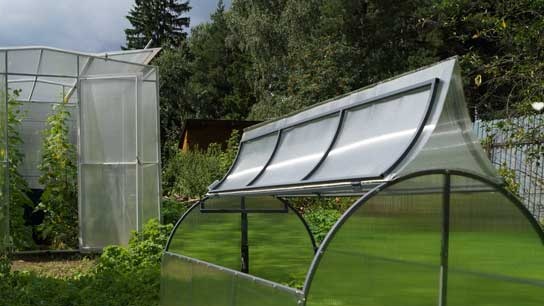 Why is a greenhouse open top?
Why is a greenhouse open top?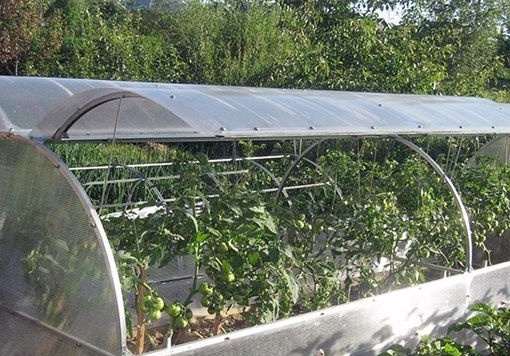 Greenhouse "Butterfly", is it worth it?
Greenhouse "Butterfly", is it worth it?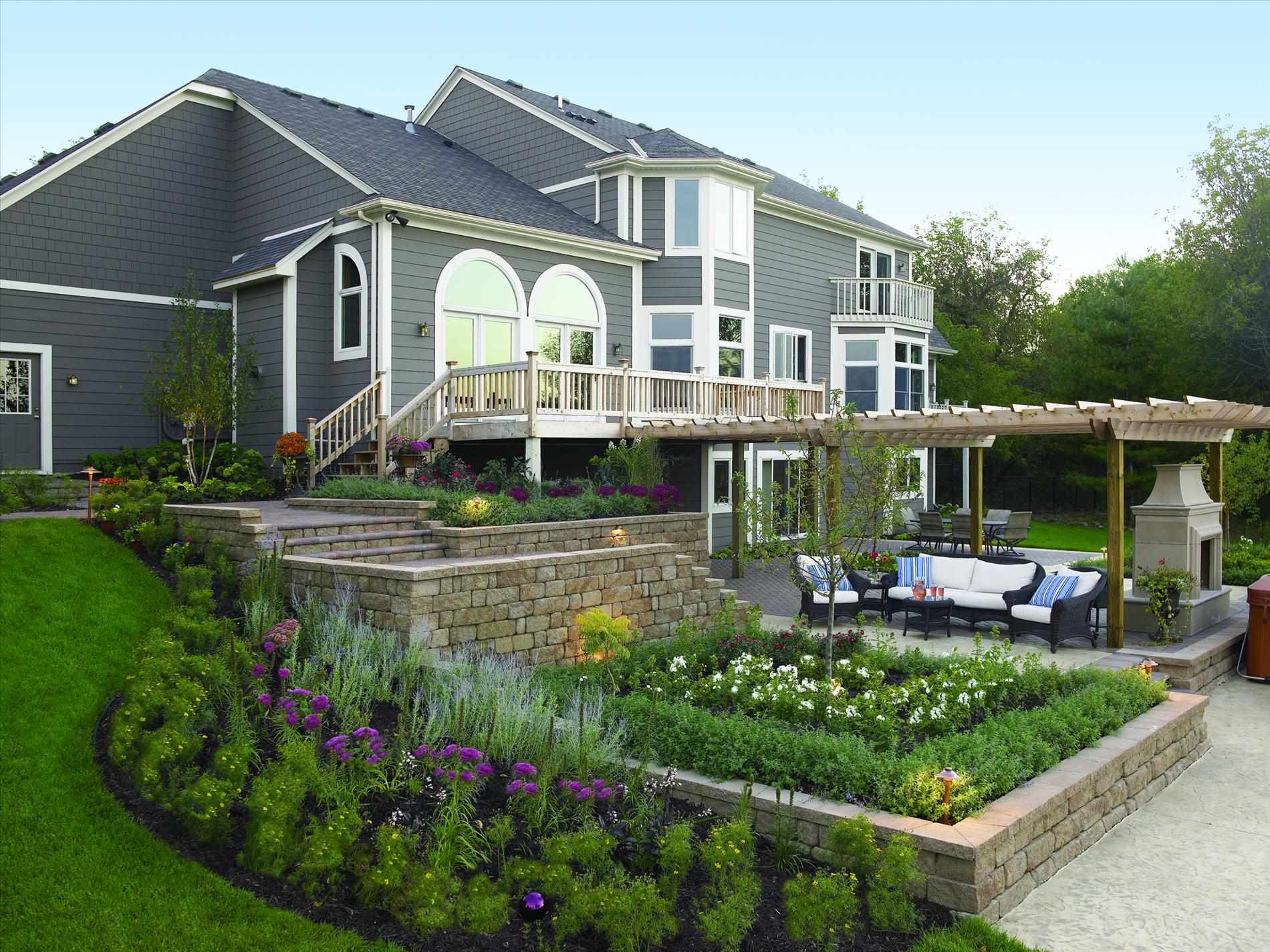 Do-it-yourself landscaping of an area of 8 acres: features of planning and zoning
Do-it-yourself landscaping of an area of 8 acres: features of planning and zoning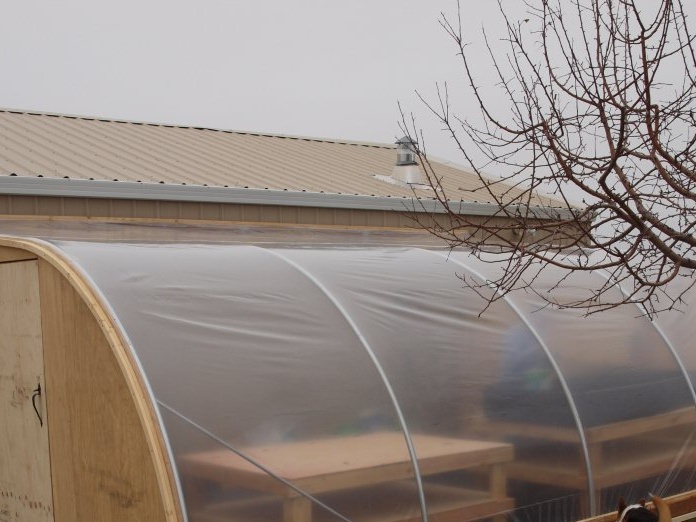 Shed greenhouse, pros and cons
Shed greenhouse, pros and cons